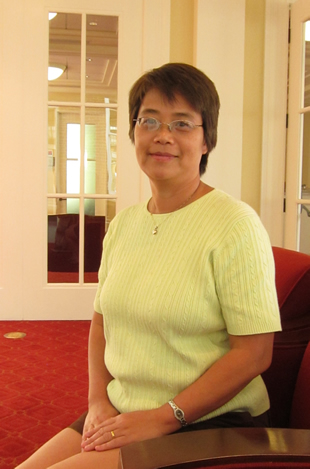
Kuanchen Pearson
I enjoyed being a student again in the 2011 Virginia STARTALK Chinese Teacher Academy at the University of Virginia after finishing my third year of teaching Chinese as a Foreign Language at Fairview Elementary, Fairfax County. It has been really interesting going back to the academic world and I had such a different experience this time around after going through various STARTALK programs in the region in the past few years.
One reason that led me to apply for this 2011 UVA STARTALK summer residential program was because of the program director, Dr. Tseng. She is a well-respected scholar and a well-known pioneer of “Teaching Chinese as a Foreign Language”. I felt excited to be one of her STARTALK students. Dr. Tseng consistently emphasized meaningful, student-centered teaching practice to help students become more autonomous in learning a new language. Also, in the class we had many top-selected participants and experienced teachers; I was able to discuss my teaching dilemmas and exchanged the rationale of language teaching. I found myself becoming a better language teaching facilitator.
Thinking back on how I learned a second language in the 70’s, it was a totally teacher-centered strategy, language acquisition with lots of drilling and memorizing and repeating after the teacher. Today, my students are fortunate to have a new approach to learning foreign languages in which they will learn in a meaningful communicative and authentic context.
Ms. Pierce / 明涓老師 also gave us a wonderful presentation on the importance of using authentic material to teach target language. She not only shared our concerns about working with authentic materials but also gave us tips on how to create authentic tasks by effective incorporation of authentic materials (some original video clips). Her presentations helped us to understand that teaching language/culture and vocabulary/grammar in meaningful communicative and authentic contexts is the most effective way to encourage students to learn Chinese.
The TBLT/Task-Based Language Teaching model is one of Dr. Tseng’s passions. I really enjoyed listening to Dr. Tseng’s insightful best practices and happily exchanged my opinions with other STARTALK participants during each pedagogical task activity. In “Task”, the student becomes a group participant, risk-taker and innovator while the teacher’s role is selector and sequencer of tasks. Through (M)eaning-focused language use, clearly defined communication (O)utcomes with self-determined language (R)esources and real-life (E)xperience, “MORE” has become my daily motto for better language teaching.
Although the practicum was a bit nerve-racking, I was so glad that I opportunities to put learned theory into practice. It was exciting to see students' progress from ground zero. To imagine that most of the students came to the camp without any Chinese background, and now they are able to greet one another, to say/ask one's name, age, Chinese zodiac, to discuss time, to count, and understand question words such as "誰 shei2 - who" and "嗎 ma," and so forth, all in Chinese, is very exciting. It seemed an impossible mission to me before this practicum started, but we did it, using Chinese to teach Chinese. That was such a big achievement for me!
Many thanks for all my teammates’ hard work in each practicum. Because of their cooperation we will all have wonderful memories of sharing this teaching and learning experience together. I appreciated all the encouragement and advice given by Shi Laoshi, Ming Laoshi and Dr. Tseng , before and after each classroom practicum.
I think a good lesson design will encourage the best outcome for students and enhance their classroom performance. When the teacher shifts classroom learning responsibility to students, and allows students to immerse themselves in plenty of student-centered activities, the output of their language skill is improved tremendously.

